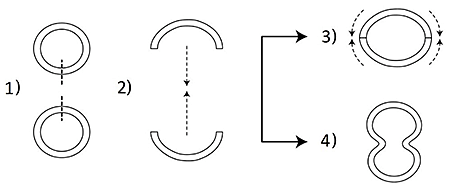What is a Cervical Slide Tracheoplasty (CST)?
CST is a surgery to repair problems in the airway. Some reasons for this surgery include:
- Issues with the upper half of the airway:
- complete tracheal rings
- a long, narrow section or area of scarring
- an “A” frame deformity
- An abnormal opening that connects the trachea (windpipe) and esophagus (food pipe), known as a tracheoesophageal fistula (TEF)
Before considering surgery, the doctor will look at your child’s airway with a tube that has a small camera attached. This test, called a microlaryngoscopy, bronchoscopy (MLB), helps the doctor decide if this is the right surgery for your child.
What Are the Risks?
All surgeries have risks. The risks for CST include:
- A figure “8” like change to the airway
- Narrowing of the airway may return
- Infection at the repair site
- Repair site breaks down
We will watch your child for:
- Trouble breathing
- Infection
- Pain
About the Surgery
If your child has a tracheotomy tube, the ENT doctor will decide if it will come out during the surgery.
The surgery takes about five to six hours and involves these steps (see diagram below).
- The doctor separates the trachea into two pieces at the narrow spot.
- One piece of the trachea is opened at the front and the other piece at the back.
- The doctor moves the top piece over the bottom piece and sews the two pieces together, which makes the trachea wider.
- The airway can look like a figure “8.” This gets better as the airway heals.

After Surgery
Your child will have an incision across their neck from the surgery, and you will see a tube coming from that incision. The drain tube helps fluid drain out of the site. The doctor removes the drain three days after surgery.
Breathing Tube (also called endotracheal tube or ETT)
- The doctor will place a breathing tube during the surgery. They may remove this tube at the end of surgery or keep it in place for up to one week after surgery.
- If the breathing tube is left in after surgery, your child will go to the ICU from the operating room. The ICU staff will reunite you with your child as soon as possible.
- When the airway is safe, the breathing tube is removed (extubated). The PICU staff will closely watch your child’s breathing after the tube is removed.
- If your child’s tracheotomy tube is left in place, they will go to the recovery room. The recovery staff will reunite you with your child as soon as possible.
Pain Control
Your child may have some pain related to the surgery. Staff will check their pain level every hour and provide pain medicines to keep your child comfortable.
Diet
- Your child will not eat or drink the day of surgery.
- Once the breathing tube is removed and your child’s breathing is comfortable, the speech therapist will check their swallowing before they are allowed to eat.
- If the breathing tube is needed longer than one day, tube feedings are started.
- If your child does not have a feeding tube, a nasogastric tube (NG) is placed during the surgery.
Activity
- Your child is encouraged to be active.
- Normal activities like sitting in a chair, walking and playing help healing.
- No sports or heavy activity for six weeks or until the ENT doctor says it is okay.
Length of Hospital Stay
- The airway staff will watch your child closely in the hospital for about 10-12 days.
- After discharge, you will need to stay close to the hospital for another week.
- You can stay at a local hotel or at the Ronald McDonald House.
Follow-Up
- Your child will have a test, called a microlaryngoscopy, bronchoscopy (MLB), to see how their airway is healing.
- The doctor will watch the airway for healing weekly.



